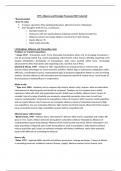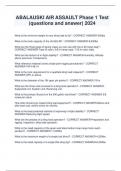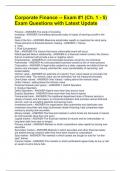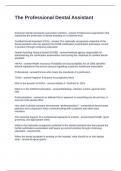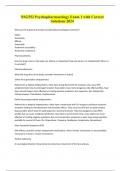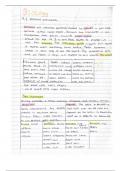Summary
Summary MT7 Strategy Reading Notes: Alliances and Strategic Processes
- Module
- Strategic Management
- Institution
- Oxford University (OX)
A detailed summary of reading list sources along with examples. The document is structured as follows: multi-sentence summary of key readings, list of examples relevant to the topic organized by conceptual theme, more detailed summaries of each key reading. Prepared by a first class E&M student for...
[Show more]
